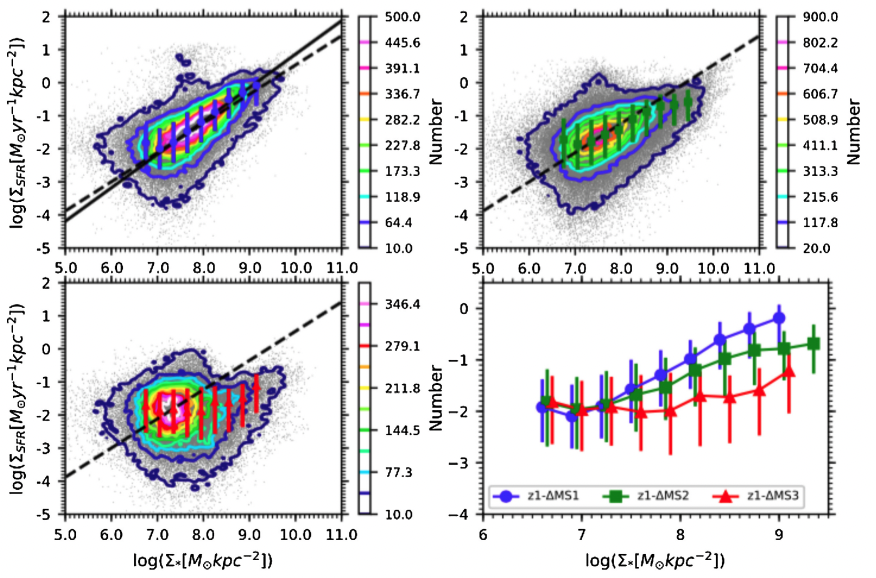Evolution of spatially resolved star formation main sequence and surface density profiles in massive disc galaxies at 0 < z < 1: inside-out stellar mass buildup and quenching
Published in MNRAS, 479, 5083, 2018
We investigate a relation between surface densities of star formation rate (SFR) and stellar mass (M) at a ∼1 kpc scale namely spatially resolved star formation main sequence (SFMS) in massive (log (M/M⊙) > 10.5) face-on disc galaxies at 0.01 < z < 0.02 and 0.8 < z < 1.8 and examine evolution of the relation. The spatially resolved SFMS of z ∼ 0 galaxies is discussed in a companion paper. For z ∼ 1 sample, we use eight bands imaging data set from Cosmic Assembly Near-infrared Deep Extragalactic Legacy Survey and 3D- HST and perform a pixel-to-pixel spectral energy distribution fitting to derive the spatially resolved SFR and M. We find a linear spatially resolved SFMS in the z ∼ 1 galaxies that lie on the global SFMS, while a `flattening’ at high Σ end is found in that relation for the galaxies that lie below the global SFMS. Comparison with the spatially resolved SFMS of the z ∼ 0 galaxies shows smaller difference in the specific SFR (sSFR) at low Σ* than that at high Σ. This trend is consistent with the evolution of the sSFR(r) radial profile, which shows a faster decrease in the central region than in the outskirt, agrees with the inside-out quenching scenario. We then derive an empirical model for the evolution of the Σ(r), ΣSFR(r), and sSFR(r) radial profiles. Based on the empirical model, we estimate the radial profile of the quenching time-scale and reproduce the observed spatially resolved SFMS at z ∼ 1 and ∼0.

